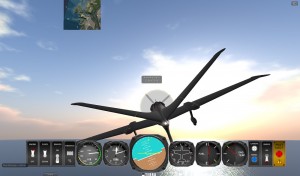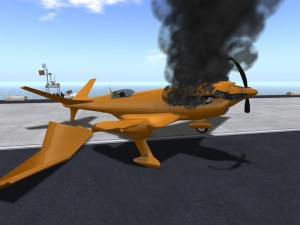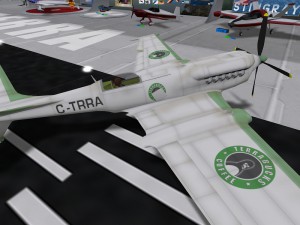As I posted previously, Terra Atom launched at the beginning of this month. The launch event brought virtual aviators both old and new and even attracted the elusive and mysterious Governor Linden in the form of a hamster with some excellent dance moves.
I’d like to say thanks to everyone who dropped by to support the launch, the skilled testers who helped me finish Atom, and the pilots who bought and fly Terra Atom. Without all of you, Atom wouldn’t have happened.

Atom isn’t the end, though; it’s only the beginning. As I write this, I have my latest prototype open in Blender. For this one, I’m building around a classic teardrop fuselage: larger at the front and tapering to a point. The wing shape is inspired by aircraft of the 1930s, and the cockpit is as far back as possible. The entire shape is intended to give the impression of a powerful force pulling a tapered shape through the sky.
It’s a prototype at this stage, so fundamental shapes and features may still change, but I’m happy to be at this stage after a couple of weeks, especially considering that a hard drive crash left me dead in the water for several days.
Keep an eye on this site for updates. I’ll post pictures and news.
Blue skies.










